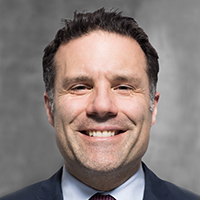What is ESG investing? A spectrum of approaches

This article first appeared in WP Magazine.
In a wide-ranging interview, two environmental, social, and governance (ESG) investment leaders from Manulife Investment Management discuss how ESG is transforming investing globally and how their active approach sets them apart.

As the terms ESG, sustainability, and responsible investing (RI) float through the financial press, it can be hard to define and, most importantly, communicate the value of these approaches to clients. With a number of overlapping doctrines and practices, new standards are needed. To discuss RI and the development of standards that may clarify issues for investors, WP sat down with Manulife Investment Management’s Margaret Childe, Head of ESG for Canada, and Patrick Blais, Head of the Fundamental Equity team. Margaret and Patrick spoke to us about understanding ESG and RI as a spectrum of distinct approaches, and how that perspective informs their unique approach.
WP: ESG investing seems to suffer from too many acronyms and terms—there’s ESG, RI, SRI, impact investing, and sustainable investing. This has led to some confusion about what these terms really mean. How do you help investors and advisors understand what’s important about this space?
Margaret Childe: It's important to think of RI as a spectrum of approaches. It’s something that’s understandably confusing to people, but I think that there will be more guidelines made available in Canada, and even globally, that will help define these approaches across the RI spectrum. Historically, we started with socially responsible investing, which is often associated with excluding investments in sensitive business areas, such as alcohol, weapons, gambling, and tobacco. And that has persisted as a type of investment practice within the RI field for many decades. Over time, though, new approaches have developed, particularly ESG integration, which is about evaluating material ESG factors throughout the investment process. Used in this way, ESG is a term that’s been around since roughly 2005. Since then, we’ve seen the proliferation of more thematic and impact-oriented investments, which are focused on companies that are performing better in certain thematically defined areas, such as human rights, climate change, or diversity. These are all viable approaches to RI, but I would say ESG factors form the basic shared building blocks. Practitioners use the data—and an evolving space of new metrics tied to widespread corporate adoption of ESG best practices and disclosure.
Patrick Blais: We're focused on ESG integration within our fundamental equity team. It's been a process we’ve built up over a number of years as Manulife Investment Management—and our parent company, Manulife Financial—has made ESG considerations an integral part of the organization and has provided us with the capabilities, tools, and resources to implement a robust ESG framework. What we mean by that is measuring ESG opportunities and risks and incorporating these into the foundations of our investment process. And furthermore, we extend ESG factor analysis to engagement—our practice of active ownership, through which we meet with investee companies to assess their resiliency to ESG risks and their ability to take advantage of ESG opportunities. This ongoing dialogue with companies over their ESG exposures is a powerful lever for enhancing their operating strength.
WP: What does Manulife Investment Management offer along the spectrum of ESG strategies?
MC: As a global asset manager, we have many different clients with many different needs and views on RI. And in turn, our approach to RI is quite broad. As Patrick said, we focus on ESG integration—and we integrate ESG into our investment process—but we also have thematic investing capabilities, from Sharia-driven investment approaches in Asia to climate-oriented approaches. In the institutional context, we can tailor our approach to our clients’ needs. It’s about understanding what they're looking for and talking through their options.
PB: From a portfolio management point of view, I think many of our clients are in the process of learning about ESG implications and defining their ESG values. I would say the majority of them really look to ESG integration, recognizing the positive impact that implementing a strong ESG framework can have on investment decisions, resulting in better risk/return outcomes. Clients are looking for an asset manager who can exchange knowledge, have discussions, and provide expertise to help them through what is certainly an exciting and evolving landscape.
WP: Can you say more about engagement as a part of your ESG integration efforts?
MC: As active managers, we’re also active owners, which means we regularly engage with our investee companies over ESG issues and strategically vote our proxies and offer support for a wide range of shareholder proposals to company boards. Engagement is about creating an open dialogue through which we can discuss matters that we believe are material to a firm's long-term success, and that in turn helps to create the long-term financial value that we're looking for our clients and other stakeholders. Engagement is really helping us to understand the ESG issues that underpin the company's strategy or valuation and provides an opportunity for companies to better understand our investment process and objectives. Over time, there's been a shift from a total focus on fact-finding to one that includes creating partnerships with companies. In this process, there's a lot of benefits that can be derived not only for the investor and the company, but for stakeholders more broadly. For example, we recently engaged with a Chinese insurance company on matters related to climate change. The engagement was focused on the company’s strategy, governance, risk management, and even the targets that it had in place around climate change. As a result of that engagement, the company in question became a signatory to the Principles for Responsible Investment (PRI), and even joined an important global collaborative initiative, Climate Action 100+, which we’ve been a founding member of since 2017. That led to the company publishing its first climate change report in China. These positive developments, both in terms of the company’s commitment and transparency, give you a flavor of what we mean by positive engagement outcomes.
WP: What do you see as the benefits for investors in using ESG-integrated strategies in their portfolios?
MC: Generally, the central objective of our approach is to strengthen the potential risk/reward profile of the investments and of our clients’ portfolios. In public markets, we're seeking to create that positive impact by engaging with the investee companies to mitigate those challenges and exploit the opportunities that are related to ESG factors.
PB: ESG analysis allows us to better frame the relevant risks and opportunities, and if you merge that with more traditional forms of fundamental analysis, we think it gives us a better appreciation of the upside and downside potential offered by individual companies. We find, in turn, that gives us much better control of the risk/return profile of our portfolios. As we’ve said, engagement gives us an opportunity to help strengthen our investee companies. That means we can make an impact on company decisions when we highlight transparency issues and shift management’s focus toward key financial metrics and ESG issues that can result in better decisions. Proxy voting plays a big role here as well. At Manulife Investment Management, we employ best-in-class standards when it comes to proxy voting, and we believe this further enhances our impact on companies as well as shareholder and stakeholder value. Making companies more sustainable is part of doing the right thing—investing responsibly—on our clients’ behalf.
WP: In terms of portfolio performance, advisors sometimes question whether an ESG-integrated portfolio actually can perform better than a more traditional approach in a volatile market. How do you respond to that concern?
PB: As a portfolio manager with over two decades of experience, I think the question has long been settled and the myth of ESG strategy underperformance put to rest. ESG integration is, in part, a formalization of thinking about a number of risks that in the past weren't fully understood or accounted for by asset managers, investors, or advisors. In our process, we perform two fully fledged investment analyses: One is an ESG analysis that we produce as a report; the other is an investment research report, which incorporates the material, quantifiable ESG elements that can impact the fundamentals of the company we’re researching. I firmly believe—and regularly quantify—that we improve the risk/return profile of our portfolios because we systematically incorporate an understanding of ESG risks and opportunities. This analysis gives us the tools to mitigate risks in certain instances because it gives us actionable points on which we can engage with a company and potentially move the dial in a positive direction for that company and, by extension, our portfolios.
WP: When advisors are doing their due diligence with asset managers about ESG strategies, what questions should they ask to understand if what’s on offer is an effective ESG-integrated strategy?
MC: I think advisors need to take some time to understand the differences that exist between managers in their approaches to ESG and RI. Some key questions might be, for example, what is the manager’s philosophy as it relates to RI? What are some of the best practices that they seek to employ? Do they have dedicated personnel and resources to support their ESG efforts? To put it in context, at Manulife Investment Management, our philosophy really is that ESG analysis should benefit all our clients. We focus on ESG integration across all our strategies, with that central objective of strengthening the potential risk/reward profile for our clients. But in addition to that, we're also seeking to shape global solutions to problems that are systemic in nature, such as climate change or biodiversity loss. We're seeking to increase diversity within companies, too, which we’re not alone in believing carries positive benefits for companies’ business potential and long-term sustainability.
PB: Many of the questions we get really drill down to, “Is it really part of your culture? Are you just saying that you do ESG? Or is it really ingrained in your culture?” And I think a lot of what Maggie has covered are the right questions to ask. For example, have you invested in an independent ESG team? Do you have access to the right tools? How does your dedicated ESG team work together with your portfolio managers, especially on the ESG integration of certain specific ESG products? At Manulife Investment Management, we're lucky to have made ESG an integral part of our investment process. That’s been reflected in outside recognition, with consistently strong ratings of our strategy and governance, as well as our equity and fixed-income capabilities. Very recently, we've been recognized as a leader in reporting by the PRI with a special recognition on the climate front this year. We're actually one of only 20 managers to have achieved this globally and the only Canadian manager to have done so.
WP: What is unique about the Manulife Investment Management approach to RI and ESG?
MC: In talking about what is unique, I would also highlight two key advantages: We have a dedicated, global ESG team with deep experience, with boots on the ground in Asia, Europe, and North America. That gives us a globally informed perspective. Second, we are active managers in the truest sense of the term. Because of this, we’re not satisfied to just take third-party ESG scores as the signature of our ESG credentials. We independently unpack companies’ ESG data, create proprietary frameworks for understanding that data, and focus on incorporating what’s material to the investment process into each of our investment approaches. We combine these perspectives—the globally informed ESG view and the insight of veteran investment teams. That combination gives us the added value of providing an ESG analysis that is best suited to the strategy in question and, in turn, a better chance of meeting or exceeding our clients’ objectives. We also focus on real-world outcomes in our engagement practice, which helps to improve the sustainability of the investee companies but also addresses systemic risks such as climate change.
WP: Given the ongoing complexity in this space, how should advisors go about talking to their clients about ESG?
MC: It's important for advisors to discuss the spectrum of ESG options with their clients because there are many different viewpoints and perceptions in this space. We do feel that authentic and robust ESG integration, for example, can lead to a more comprehensively evaluated risk/return profile for virtually any investment. And, in our view, these types of strategies can help address some of the systemic risks that we see in the market today. But it's important for the individual client to feel comfortable with the approach that the manager is taking and understand the direction of travel in this space. Advisors should continue to read up on this topic, and there's a lot of information out there. They should have those discussions with the portfolio manager, understand the firm’s culture, get familiar with their philosophy, and how they're approaching ESG and responsible investing¹.
Important disclosure
Important disclosure
1 Views are those of Margaret Childe and Patrick Blais of Manulife Investment Management and are subject to change. No forecasts are guaranteed. The commentary is provided for informational purposes only, is subject to change as market and other conditions warrant, and is not an endorsement of any security, mutual fund, sector, or index. Any economic or market performance is historical and is not indicative of future results. Investing involves risks, including the potential loss of principal.
A rise in interest rates typically causes bond prices to fall. The longer the average maturity of the bonds held by a fund, the more sensitive a fund is likely to be to interest-rate changes. The yield earned by a fund will vary with changes in interest rates.
Currency risk is the risk that fluctuations in exchange rates may adversely affect the value of a fund’s investments.
The opinions expressed are those of Manulife Investment Management as of the date of this publication, and are subject to change based on market and other conditions. The information and/or analysis contained in this material have been compiled or arrived at from sources believed to be reliable but Manulife Investment Management does not make any representation as to their accuracy, correctness, usefulness or completeness and does not accept liability for any loss arising from the use hereof or the information and/or analysis contained herein. Manulife Investment Management disclaims any responsibility to update such information. Neither Manulife Investment Management or its affiliates, nor any of their directors, officers or employees shall assume any liability or responsibility for any direct or indirect loss or damage or any other consequence of any person acting or not acting in reliance on the information contained herein.
All overviews and commentary are intended to be general in nature and for current interest. While helpful, these overviews are no substitute for professional tax, investment or legal advice. Clients should seek professional advice for their particular situation. Neither Manulife, Manulife Investment Management Limited, Manulife Investment Management, nor any of their affiliates or representatives is providing tax, investment or legal advice. Past performance does not guarantee future results. This material was prepared solely for informational purposes, does not constitute an offer or an invitation by or on behalf of Manulife Investment Management to any person to buy or sell any security and is no indication of trading intent in any fund or account managed by Manulife Investment Management. No investment strategy or risk management technique can guarantee returns or eliminate risk in any market environment. Unless otherwise specified, all data is sourced from Manulife Investment Management.
Manulife, Manulife Investment Management, the Stylized M Design, and Manulife Investment Management & Stylized M Design are trademarks of The Manufacturers Life Insurance Company and are used by it, and by its affiliates under license.

